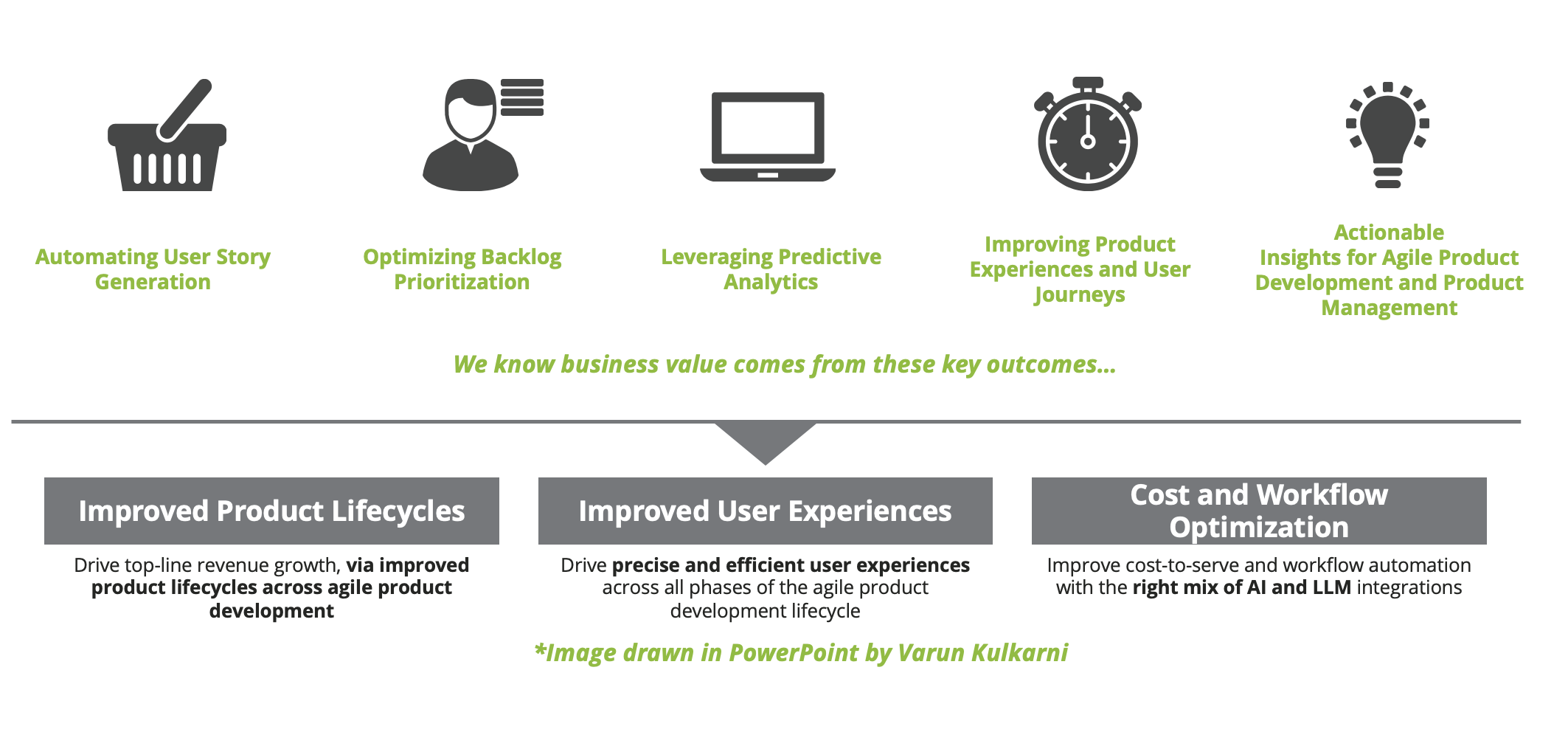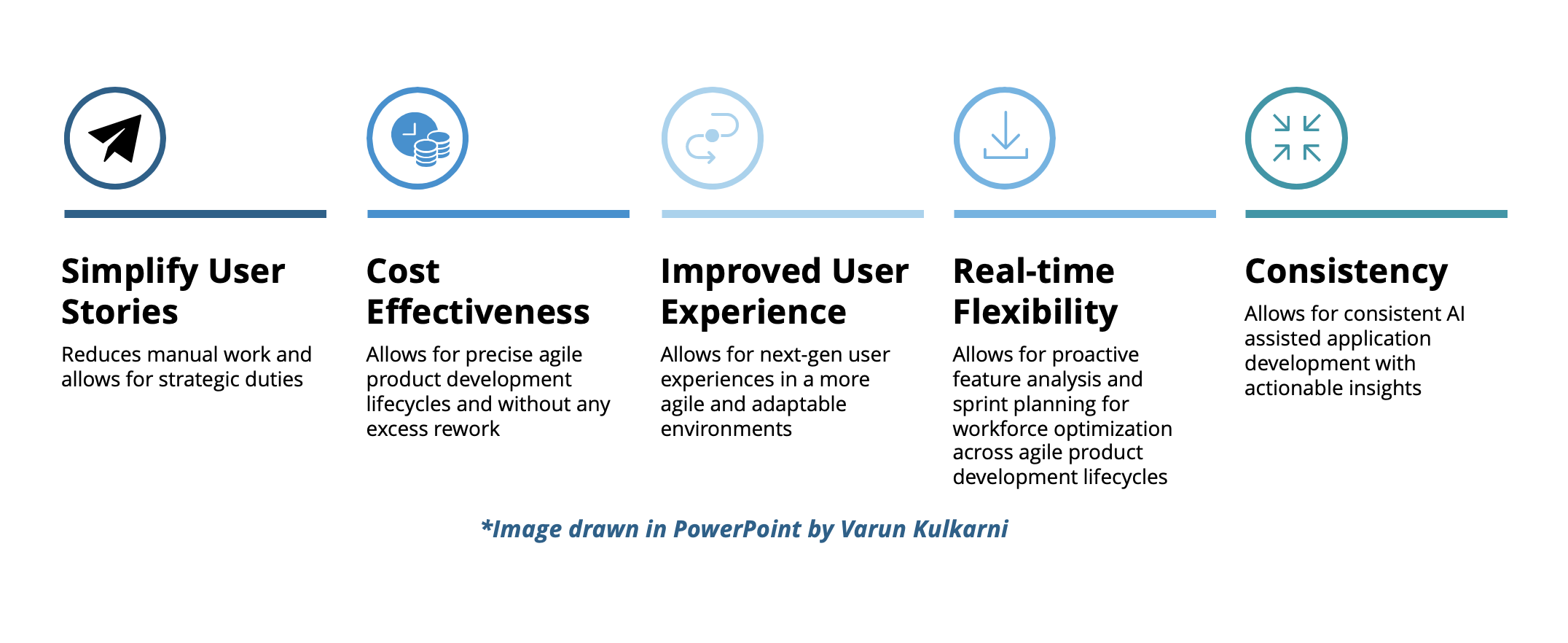Enhancing Agile Product Development With AI and LLMs
AI and LLMs streamline user story creation, optimize backlog, and predict trends, improving agile product development speed, relevance, and user engagement.
Join the DZone community and get the full member experience.
Join For FreeDuring my 10+ years of experience in Agile product development, I have seen the difficulties of meeting the rapid requirements of the digital market. Manual procedures can slow down highly flexible software engineering and delivery teams, resulting in missed chances and postponed launches.
With AI and Large Language Models (LLMs) becoming more prevalent, we are on the verge of a major change. Gartner points out a 25% increase in project success rates for those using predictive analytics (Gartner, 2021). These technologies are changing the way agile product development is optimized - by automating tasks, improving decision-making, and forecasting future trends. As stated in a report from McKinsey, companies using AI experience a 20% decrease in project costs (McKinsey & Company, 2023).
In this article, I discuss how agile product development including any experiences and user journeys can be improved based on AI and LLM integrations across the development lifecycle.

AI and LLM Integration Phases for Agile Product Development
Automating User Story Generation
Creating user stories is crucial for Agile development, although it can be time-consuming. LLMs, for example, such as GPT-4 from OpenAI are able to streamline the process by creating comprehensive user stories using available documentation and feedback. This speeds up the process while also enhancing precision and significance.
Application Scenario
For example, I focus on utilizing AI or LLM-based methods for streamlining, optimizing, and automating the creation of user stories. Integrating such methods with a comprehensive backlog has allowed me to improve product development lifecycles and any engineering prioritization. This significantly reduces user story creation time, which is also helpful for solutions architects and increases user satisfaction where there is more relevant and accurate feature development.
Significance and Advantages
The automation of generating user stories is essential as it reduces the monotonous job of creating stories by hand, enabling product managers and software engineers to concentrate on more strategic tasks. This process guarantees that user stories are created uniformly and in line with user requirements, resulting in improved prioritization and quicker development cycles. Assisting agile teams in sustaining their progress and releasing features that better align with user needs. Additionally, organizations that adopt AI for generating user stories usually see a 50% reduction in story creation time (Menzies & Zimmermann, 2022).
- Also Read: "User Story Reflections"
Optimizing Backlog Prioritization
Key to swift value delivery is effective prioritization of the backlog. AI algorithms analyze user feedback, market trends, and technical dependencies to forecast the most valuable features. This approach driven by data assists product managers in making well-informed choices.
Application Scenario
For example, during the development of a digital healthcare consumer platform, I utilized AI tools to review user feedback and determine which backlog items to focus on first. This was mapped across different prioritization techniques as well as how engineering would execute them based on complexity. As a result, there was a 40% rise in feature utilization and a 20% decrease in feature development duration, which also helped the software engineering team improve their metrics.
Significance and Advantages
It is crucial to prioritize backlog optimization in order to make informed decisions that improve the value of the product and customer satisfaction. Utilizing AI for prioritization aids agile teams in determining which features will yield the greatest benefit, enabling them to utilize resources effectively and concentrate on tasks with significant impact. Companies that have implemented AI for prioritizing their backlog have seen a 40% growth in feature adoption (Buch & Pokiya, 2020).
Leveraging Predictive Analytics
Predictive analytics offers insight to help shape development tactics. AI models can predict risks and estimate delivery times by examining historical data, helping teams address issues and align development efforts with market changes. Further, this can help agile product development teams assess how to staff across sprints and ensure workforce optimization to improve feature velocity.
Application Scenario
For example, I use predictive analytics in collaboration with engineering development and delivery teams to predict how new features would affect Sprint planning, Sprint allocation, and user engagement. The information assisted in determining which updates were most important as well as need execution in upcoming sprints and has allowed me to optimize MVPs, resulting in a ~25% rise in user retention and a ~15% increase in new user acquisition across two different products.
Significance and Advantages
Predictive analytics offer practical insights that steer strategic choices in flexible product development. Teams can prioritize new features that will have the greatest impact on user engagement and retention by predicting their effects. Businesses that use predictive analytics have observed a 25% rise in customer retention (Forrester, 2019).
Improving Product Experiences and User Journeys
AI and LLMs improve user journeys and product experiences through a more user-focused approach to development. Automated creation of user stories guarantees that features are developed according to genuine user requirements, resulting in products that are more instinctive and captivating. This alignment improves user satisfaction and involvement by customizing features to meet specific needs and desires.
Use Case
For example, I used LLMs to analyze user feedback and create features that directly addressed user pain points. This resulted in streamlining and optimizing how different product features are lined up along with tech debt for engineering execution. I have seen a ~35% increase in user engagement significant reduction in user churn rates.
Significance and Advantages
Improving product experiences and user journeys with AI and LLMs ensures a user-focused approach in product development, resulting in more user-friendly and personalized experiences. Aligning with user needs not only boosts satisfaction but also enhances engagement and retention. After incorporating AI-driven improvements, companies have experienced a 35% rise in user engagement (Ransbotham, Kiron, Gerbert, & Reeves, 2018).
Supporting Agile Product Development and Product Management
Incorporating AI and LLMs into agile product development changes how teams tackle and carry out projects, providing numerous advantages. To begin with, these technologies simplify the process of developing user stories, cutting down on manual work and allowing more time for strategic duties. This results in enhanced precision and significance in feature advancement. Also, by using AI to prioritize the backlog, teams can concentrate on important tasks, leading to better use of resources and increased overall productivity. Predictive analytics enhances value by predicting feature performance, allowing teams to make educated decisions that increase user retention and engagement. From my own experience, I've noticed that these advancements not only speed up the process of development but also make products better suited to user requirements, resulting in a more agile and adaptable development setting. The integration of AI in agile product development leads to improved product management, faster iterations, and enhanced user experience. For example, the global AI-assisted custom application development market is expected to grow up to $61Bn and from 21% to 28% by 2024 (Deloitte Insights, 2020).
As a product manager working across multiple software engineering teams, AI and LLMs have helped me simplify decision-making by automating routine tasks and providing actionable insights. Automated user story generation and backlog prioritization free up time to focus on strategic aspects, while predictive analytics offers data-driven forecasts and trend analysis. This results in a more agile and responsive product management process, where decisions are guided by comprehensive data and real-time insights, ultimately leading to more successful product outcomes and better market alignment.

Conclusion and Next Steps
The incorporation of AI and LLMs in agile product development seems like a dynamic revolution. In my opinion, these tools have revolutionized the way tasks are done by automating them, streamlining processes, and forecasting trends accurately. They have made workflows more efficient and enhanced product experiences, resulting in more agile and responsive development cycles. As we further accept and improve these technologies, I look forward to witnessing how their developing abilities will continue to change our strategy for creating and providing outstanding products. The process of incorporating AI and LLMs into agile product development methods is indeed exciting and filled with potential.
Key Takeaways
- Start using AI and LLM tools to automate and improve the generation of user stories and prioritize backlogs in your development processes.
- Utilize predictive analytics: Employ predictive analytics to gain insight into potential project risks and market trends, enabling proactive modifications.
- Prioritize user-centric development: Utilize AI-generated insights to enhance product experiences for better user satisfaction and retention.
Opinions expressed by DZone contributors are their own.

Comments